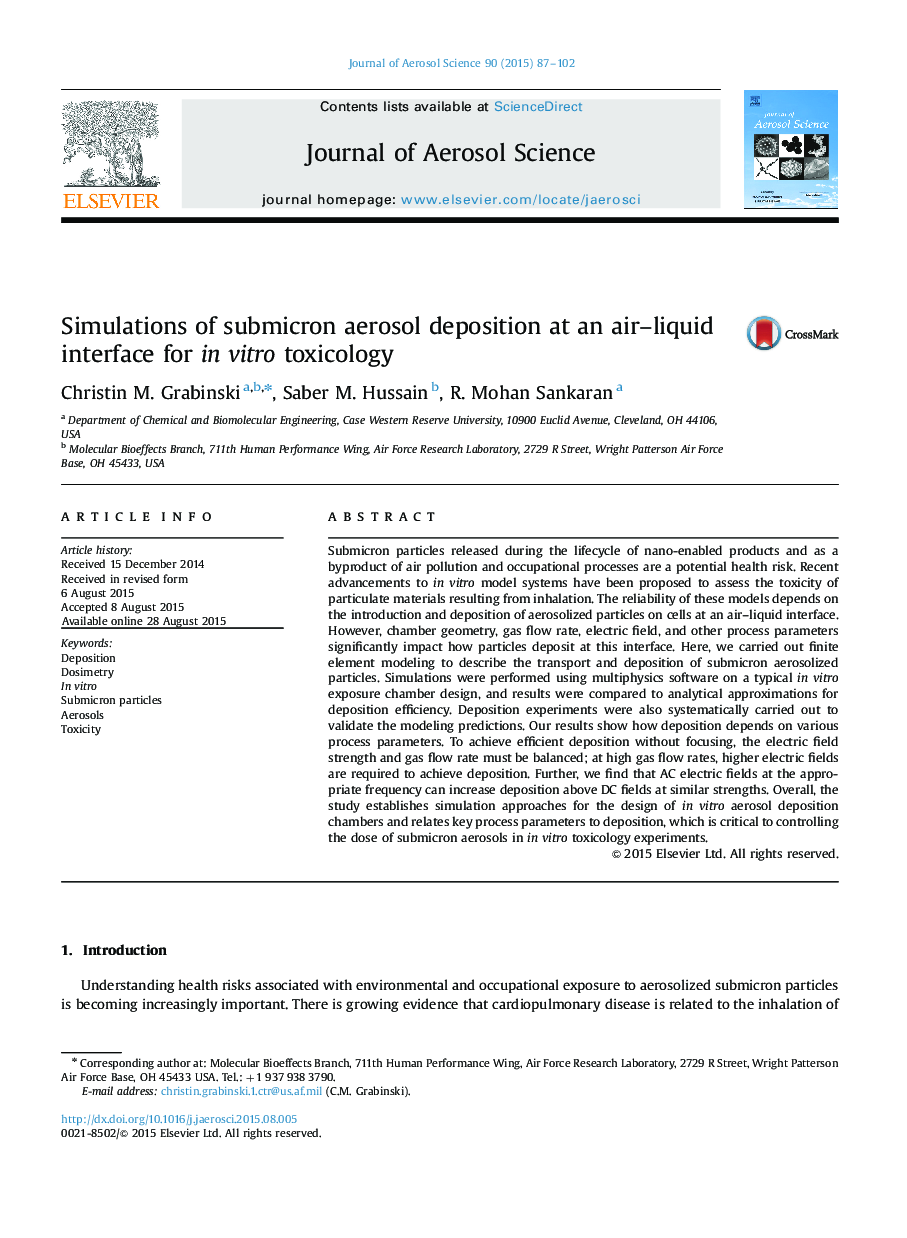| Article ID | Journal | Published Year | Pages | File Type |
|---|---|---|---|---|
| 6344406 | Journal of Aerosol Science | 2015 | 16 Pages |
Abstract
Submicron particles released during the lifecycle of nano-enabled products and as a byproduct of air pollution and occupational processes are a potential health risk. Recent advancements to in vitro model systems have been proposed to assess the toxicity of particulate materials resulting from inhalation. The reliability of these models depends on the introduction and deposition of aerosolized particles on cells at an air-liquid interface. However, chamber geometry, gas flow rate, electric field, and other process parameters significantly impact how particles deposit at this interface. Here, we carried out finite element modeling to describe the transport and deposition of submicron aerosolized particles. Simulations were performed using multiphysics software on a typical in vitro exposure chamber design, and results were compared to analytical approximations for deposition efficiency. Deposition experiments were also systematically carried out to validate the modeling predictions. Our results show how deposition depends on various process parameters. To achieve efficient deposition without focusing, the electric field strength and gas flow rate must be balanced; at high gas flow rates, higher electric fields are required to achieve deposition. Further, we find that AC electric fields at the appropriate frequency can increase deposition above DC fields at similar strengths. Overall, the study establishes simulation approaches for the design of in vitro aerosol deposition chambers and relates key process parameters to deposition, which is critical to controlling the dose of submicron aerosols in in vitro toxicology experiments.
Related Topics
Physical Sciences and Engineering
Earth and Planetary Sciences
Atmospheric Science
Authors
Christin M. Grabinski, Saber M. Hussain, R. Mohan Sankaran,
